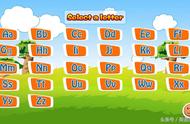
非谓语动词用法表
从上图我们可以看出四种非谓语动词:不定式、动名词、现在分词和过去分词都可用做表语和定语,要区别它们的用法看上去很麻烦,但要只我们掌握了它们的基本规律,还是可以轻松区分得。下面我们一起来分析一下它们的用法规律:
一、表语:

非谓语动词做表语
不定式:表示动作, 说明主语的内容 “是什么?” 一次性,某次,将来
动名词: 表示动作, 说明主语的内容 “是什么?” 一般,普遍,经常
现在分词: 表示状态, 说明主语性质,特点或所处状态“怎么样?”与主语有主动关系
过去分词: 表示状态, 说明主语性质,特点或所处状态“怎么样?”与主语有被动关系
注: 不及物动词的过分词做表语,不表示与主语有被动关系。只表示完成。
f.g: So all she could do was to go back home.
*What she hated most was resting at home and doing nothing.
* How joyful and relaxing it is to have a game of table-tennis after a day of study at school.
*Galileo was not discouraged. /It's sold and gone.
二、 定语:

(1)不定式(后置)
a. 与修饰名词主动关系;用一般主动式(to do),表示将来
f.g:So he made some candles to give light.
b. 与修饰名词被动关系,表示将来
①与本句中的“主语”是主动关系时,用一般主动式(to do)
f.g:Have you anything to say for yourself?
②与本句中的“主语”是不主动关系时,用一般被动式:to be done
f.g:I’m going to the post office. Have you anything to besent?
③不定式为“不及物动词 介词”作定语时,“介词”不可漏掉。
f.g:Years of hard work, little food only a cold room to live in。
注:为强调该“介词”,可用该“介词 which 不及物动词”
f.g: Shehad only $1.87 with which to buy Jim a present.(to buy Jima present with)
c. 说明被修饰名词的内容:need, time, way, right, chance, force, trouble, energy, movement,courage, reason, drive, decision, struggle, wish, promise, plan, ability,eagerness, favor
注:在上列这些名词后面只能用“不定式”作定语,不可用“分词或动名词。该“不定式”与被修饰名词无逻辑关系,只说明被修饰名词的内容。
f.g: People need energy to live.
*She could no longer find a way to get into the valley.
*Do me the favour to put on this shirt.
*He then thought of a plan to punish William Tell.
(2)动名词(前置) 构成名词词组,说明被修饰名词的作用(与修饰名词无逻辑关系)
f.g:hiding-place/ fishing pole/ walking stick/ drinking cups
(3)分词(前,后置)单个分词前置;分词短语后置:
A.现在分词:与被修饰名词主动关系 ① 进行 ② 一般状态
f.g:the burning building/ glaring eyes/ an inspiringleader
*There were so many people in the street watching the firethatfirefighter could not get close to the building.
*Asia is the largest continent, coveringone thirds of the earth's land areas.
*He placed his guns in them, pointing outwards.
B.过去分词:与修饰名词被动关系 ① 完成(过去) ②一般状态
f.g: exposedland areas/ a wounded boy/ rejected suits/ pollutedair
*It was a sword-thrust, received from 20 to 24 hours before.
*He brought out a package, marked with name and date.
注: ①. n/adj.-doing/done构成合成词:(形容词)
与修饰名词主动关系,用n/adj.-doing
与修饰名词被动关系,用n/adj.-done
f.g: man-made objects/ water-covered globe/ funny-looking man
②.表示与修饰名词有被动关系时:
用:“不定式to do或to be done” 表示将来
用: “being done” 表示正在进行,
用:“过去分词done”表示① 完成(过去) ②一般状态
f.g: The building to be built next year is our teachers' office.
The building being built at present is our teachers' office.
The building built last year is our teachers' office.
③.分词如修饰一个由某人发出的“表情、声音等词”现在分词和过去分词的区别要看其与发出者的关系,而不看与被修饰名词的关系。
f.g: There was an excited look on his face.(He wasexcited.)
④.不及物动词的现在分词和过去分词作定语只能表示和被修饰名词有主动关系。用“现在分词”表示动作正在进行;“过去分词”表示动作完成。
f.g: adeveloping country/ a developed country/ fallingleaves/ fallenleaves
,













